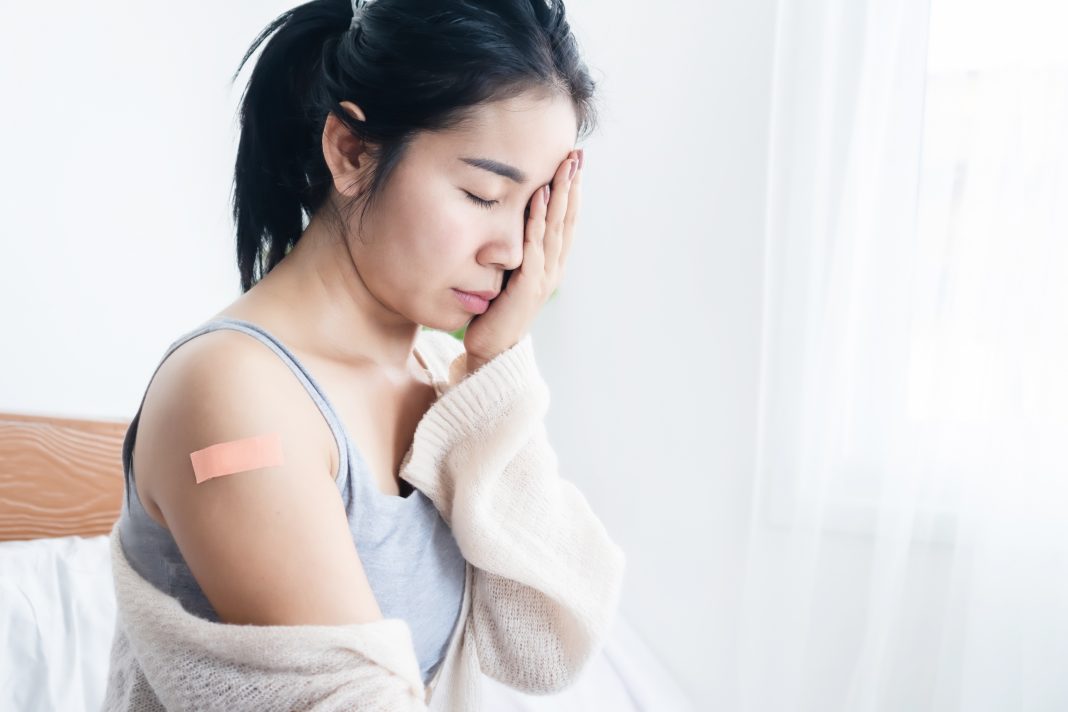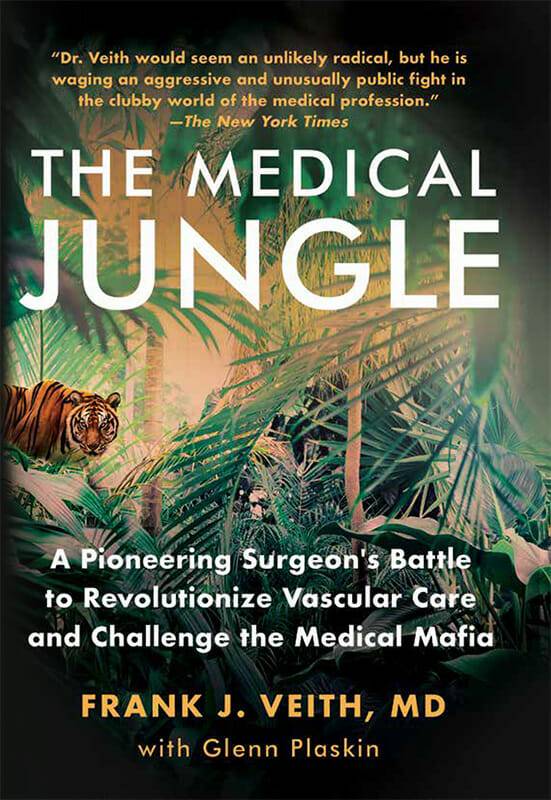What To Know
- After a day or two, you can feel your arms in dull, aching pain, unable to reach their full range of motions and perform only a limited number of activities.
- The influx of neutrophils, monocytes, lymphocytes, T cells, B cells, and Mast cells activates the inflammatory response of the body to defend against invaders.
Shoulder pain after vaccination is considered a normal phenomenon. After a day or two, you can feel your arms in dull, aching pain, unable to reach their full range of motions and perform only a limited number of activities.
Common symptoms are pain, redness, and swelling on the injection site. People usually just bear the pain until it disappears, while some take the initiative to apply a cold pack intermittently or take pain reliever medicines. These symptoms are generally self-limiting and resolve after three to five days.
Aside from shoulder muscle pain, people experience systemic symptoms such as headaches and nausea. Experiencing a variety of symptoms has led some people to dread vaccination. A domino effect begins when the community develops an opposing view and understanding of the importance of vaccination.
Is Vaccination Safe?
The queries of whether vaccines are safe are indisputable. Vaccines are made to build the natural immunity to a particular disease, even before one contracts it. The effectiveness and benefits of vaccines highly outweigh the risks.
Since its discovery, humanity has combated a diversity of diseases that plagued the world. However, in rare cases, people acquire post-vaccination syndrome or injuries. When this occurs, one must take medical and legal action. You can visit https://vaccineinjuryhelpcenter.com/ to find out more.
Here are the common vaccines nowadays:
- COVID-19
- Hepatitis A and B
- Influenza
- Mumps
- Poliomyelitis
- Rubella
- Rotavirus
- Tetanus
- Typhoid
- Varicella
For years, many hypotheses and misconceptions have aired among the populace behind post-vaccination shoulder pain. People must be informed with proper knowledge and evidence-based research from medical health professionals. Here are the reasons and risks people need to know:
Reasons For Shoulder Pain
Here are some of the common reasons for shoulder pain after vaccination:
- Reactogenicity
The deltoid muscle in the arm is the most common injection site. The syringe goes through the skin to the muscle, where the genetic material penetrates the body. This area now becomes the ground zero for immune response.
The immune cells detect a foreign material and mark it as an invader. The influx of neutrophils, monocytes, lymphocytes, T cells, B cells, and Mast cells activates the inflammatory response of the body to defend against invaders.
In the next phase, the body manifests five cardinal signs of inflammation: pain, swelling, redness, heat, and loss of tissue function. The symptoms, most especially shoulder pain, are the expected adverse reactions due to reactogenicity. The vaccine mimics the pathogen without producing the disease.
It is vital the body produces inflammatory responses; it only means that the immune system recognizes the genetic material and works to create antibodies against diseases. What is perceived as ‘side effects’ and ‘harmful’ is actually the body’s cue to an effective vaccination.
- Proper Administration
Here are the requirements to ensure proper vaccine administration:
- Authorized Health Care Workers
Improper vaccine administration has caused preventable injuries to people worldwide. The vaccine must be appropriately administered by authorized medical health care workers, such as physicians, nurses, community health workers, pharmacists, health profession students, veterinarians, and dentists.
These health care providers must have undergone intensive training and clinical practice in vaccine administration. Prior to the procedure, they have to thoroughly review the patients’ immunization history, screen for contraindications, relay precautions, take vital signs, and educate the patient regarding the possible side effects and interventions.
Vaccines are administered to people of all ages. Especially the young and old are closely assessed and monitored to ensure their safety. Individuals with comorbidities are required to present medical clearance from their physicians. A proper evaluation must be conducted to eliminate those at great risk of contracting life-threatening adverse effects.
People have underestimated the weight of consequences of having just anybody perform life-risking work. Precision is of the essence, and the aftermaths may be irreversible.
- Injection Technique
Accurate injection technique is the ground for preventing vaccination injuries and ensuring the proper dispensation of vaccines throughout the body. These are the factors that must be considered:
a. Needle length: Short needles may inject into the subcutaneous tissue, which can be more painful and increase the risk of developing skin irritations. The reaction of the vaccine may be less effective, and its dispersal is not optimized. In contrast, long needles may puncture the deeper structures of the shoulder.
b. Needle size: There are various needle gauges accurate for different muscle sizes, ages, and injection site locations. It also ensures that the vaccine will dissipate in a broader area, prevent pooling and localized swelling.
c. Landmark for injection site: Incorrect landmarking may result in the puncturing of the bursa, ligaments, nerves, and other structures. Without proper intervention, the injuries may worsen and never resolve.
d. Person’s age and muscle size: The age, weight, and body physique of the patient play a role in choosing among various needle lengths and sizes. Proper choice of needle and injection site will prevent discomfort and decrease perceived pain upon needle entry in the tissues. Children and elderly individuals must be treated with utmost precautions.
e. Volume of vaccine: The dosage of the vaccine depends on the age and weight of the person. Only the indicated volume of vaccine must be administered.
Risks Of Shoulder Pain
There is a selection of injuries and inflammatory diseases associated with various vaccine administrations. Experts worldwide have been conducting research to prove these claims, prevent occurrences, create alternatives, and find a cure for affected people.
- Shoulder Injury Related To Vaccine Administration (SIRVA)
Musculoskeletal injuries manifested by Shoulder Injury Related to Vaccine Administration (SIRVA) are rare and can be prevented if the correct injection is applied. SIRVA happens when the vaccine is injected into the shoulder capsule and other deeper structures rather than the deltoid muscle.
Sharp shooting pain is felt upon injection, and symptoms start immediately. But unlike normal inflammatory response, the pain and limited motion worsens within 48 hours and do not resolve with pain relief medications. People must observe well, and the occurrence of other symptoms should be reported to a doctor immediately.
SIRVA is induced by incorrect insertion techniques that may cause shoulder pain, stiffness, nerve inflammation, weakness, or even paralysis. In this case, the pain is not solely caused by the immune response but also trauma. People with SIRVA may need physical therapy management, pain management medications, or worse, surgery.
- How To Differentiate SIRVA From An Expected Adverse Reaction?
Post-vaccination shoulder pain may be a cue from the body that the immune system has recognized the vaccine and started to work on producing antibodies. To differentiate an expected adverse reaction from an injury to the shoulder, here are the grounds to be considered:
a. No problems with shoulder prior to vaccination
b. Significant chronic pain on the shoulder after 48 hours
c. Limited mobility of the shoulder a week post-vaccination
d. Other Risks
One is at risk for acquiring the following conditions due to post-vaccination shoulder pain:
a. Adhesive Capsulitis: Also known as Frozen Shoulder. It is characterized by chronic shoulder pain and loss of motion, especially external rotation, abduction, and internal rotation. This condition has four stages and may take two years until complete recovery. In addition to pain, it impedes an individual from performing the activities of the daily living (ADL).
b. Bursitis: A bursa is a small, fluid-filled pocket in the shoulder that reduces friction between bones and joints. Inflammation in the bursa may cause localized swelling, redness, and tenderness. Sharp pain during movement may eventually lead to immobility, associated with Adhesive Capsulitis.
c. Brachial Plexus Injury: The brachial plexus comprises a web of nerves in the shoulder that carries blood supply and sensory stimulus from the spinal cord to the upper extremities. A puncture in any of the nerves or group of nerves will result in sharp shooting pain, weakness, and in severe cases, paralysis. An individual may also experience upper extremity tenderness, hypersensitivity, decreased strength, impaired reflexes, and abnormal blood flow, leading to atrophy. This condition may refer to the chest and other structures as well, making it worse for an affected individual.
d. Rotator Cuff Tear: A rotator cuff is a group of muscles comprised of Supraspinatus, Infraspinatus, Teres Minor, and Supraspinatus. They provide stability and ensure fine-tuning movements of the arms, playing a big role in abduction, medial and lateral rotation. An injury to one or two muscles will render pain and loss of hone motions of the arms, affecting the ADLs. Rotator cuff tears may take time to heal, and in severe cases, surgery is urgently needed.
e. Shoulder Impingement Syndrome: Incorrect injection technique may puncture the subacromial bursa and rotator cuff tendons resulting in their impingement in the narrow space below the acromion. The traumatic compression produces recurring pain, especially in overhead activities.
Additional Facts
Shoulder pain after vaccination makes an individual vulnerable to various musculoskeletal injuries. However, there are also other conditions associated with vaccines, namely are Guillain – Barre Syndrome, Multiple Sclerosis, Rheumatoid Arthritis, Transverse Myelitis, Optic Neuritis, and other autoimmune disorders.
Though each of these conditions has its manifestations, post-vaccination shoulder pain and other systemic symptoms must be given appropriate attention and reported to a health care professional. Immediate assessment and diagnosis must be made to provide proper medical intervention and prevent it from worsening.
The Take-Away
The efficacy and benefits of vaccines are unequivocal. They must be encouraged to mold a healthier and safer world. Post-vaccination shoulder pain is an expected adverse reaction and must not be appalled by the populace. It is merely an indication that your body acknowledges the genetic material and develops antibodies against various diseases.
Though the benefits outweigh the risks, people are still at risk of acquiring shoulder injuries from improper vaccine administration. Even if they’re considered rare, one must be aware of the reasons and dangers of post-vaccination shoulder pain. The consequences may be temporary, but it influences the daily lives of people. When severe, irreversible conditions will bring lasting disability, illness, and desolation to individuals and families.

